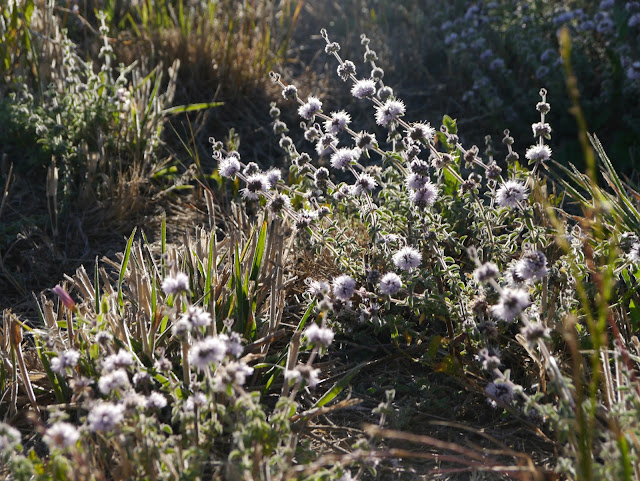These days, I've been starting my morning with a strong cup of tea, a good dose of birdsong, and then an entry from
The Book of Symbols, a marvelous compendium of image and word, a great tome of Apron, Umbrella, Ladder, Dove, Demon, Fog, Liver, Crossroads, put out by Taschen and the Archive for Research in Archetypal Symbolism. Still half in dreams, I skim and read and settle and then I write some strange little story-start. I thought now and then I'd share a few with you.
UMBRELLA
In the spring in the slanted old city by the marsh there were sudden deluges and the streets ran like rivers. The sky filled, dark, and the air started to smell wet with the freshness of damp sycamore leaves. Then it came, the rain, big and soaking. The river that curved through the city held in by stone walls that made a cement cradle puckered and spiraled with drops. You could tell a lot about a person by how they responded—running in frustration to get inside, laughing, sucking the water from their hair, continuing to walk, umbrella-less, grinning, feeling their shoes soak. In the sudden storms of spring, the Umbrella-People emerged at every street corner with chipped wheeled carts—blue, red, yellow—pulled by patient and wet mountain goats, full of cheap umbrellas. The kind that would get you to a business meeting but then break a few hours later, blown permanently inside out, a spidery silver spoke unhinged. They carried racks of the cheap ones up and down the wet sidewalks, calling out their wares, receiving mostly irritated looks and every now and then a sudden buyer.
In the carts, in a trapdoor under oiled sealskins, each Umbrella-Hawker kept several very special, very carefully and beautifully made umbrellas, in case the right person came along. The cheap ones were only a front, an excuse to patrol the sidewalks in the spring rains, swallowing waterdrops, watching for lightning, observing the passersby for the Ones Who Went Slowly Laughing Through A Storm. Such people came in all shapes and sizes, and they never came up desperate for a cheap retractable umbrella, only walked past with a mild nod. An old man in soaked tweeds and a hunting coat with a happy scruffy dog leaping beside him; an old woman loaded with a heavy basket of green-shelled walnuts and sesame seedpods, who set the baskets down, sat on a low wall in front of a limestone mansion, took off her knitted cap, and turned her face up to the rain; a sixteen year old girl in sandals and a blue dress, braids, who stomped in the puddles and held out her arms, sucked the water from her hair and was completely unaware that her young body was beautiful beyond reason through that wet dress, nipples cold and sharp, breasts high, thighs lean but round at the top, stomach soft and supple, and that several men and one woman had stumbled, sloshing soggy paper cups of coffee, or had simply stopped silently, watching her. She moved unaware of her own body, innocent of it—and what could be more lovely, just the same as a young doe walking long-legged and slow through a wet field at dawn?
For the Ones Who Went Slowly Laughing Through A Storm, the Umbrella-Hawkers shifted their demeanors, shook their aggressive salesman skills, became pious as streetside monks. They went to the wagon pulled by mountain goats and lifted a trapdoor to a compartment in the cart-bed. For the old man in tweed: an umbrella with a handle made of stained beechwood, like the trees of his childhood, wiring made of the silver-dipped sinews of white harts, the umbrella itself the fine-wrought skin of the grouse, which the man had spent much of his life hunting, and with great precision. For the old woman with her red woven basket of gleaned green seedpods: an umbrella with a cane of elderwood, wiring of the guts of lynx, just like the strings of the old fiddle she practiced twice daily, the umbel itself a quilt of onionskins sewn with raw silk from the cocoon of a silkworm, dipped repeatedly in beeswax. And for the girl of sixteen in her wet blue dress, a delicate umbrella with an unbreakable umbel made of the taut skin of a reindeer preserved in a northern bog who had died 4,000 years ago, when reindeer still roamed all of Europe, wiring made of nettle fiber strengthened with gold-leaf from the mountain streams where the mountain goats were born and suckled, a cane of rosemary wood polished and fragrant in the rain.
The purpose of these umbrellas, and the real task of the Umbrella-Hawkers in doling them out, had to do with a sort of evangelism, a secret religion, whose places of worship were tucked in odd subway alcoves and abandoned lots overgrown with red poppies and blackberries and skinny feral cats, the shadowed alley beside a ruined amphitheater, a bar rooftop with an unusually thick view of stars. What sort of rain those umbrellas were made to keep off, however, requires a long and complicated explanation, one better made by way of a tale.

























